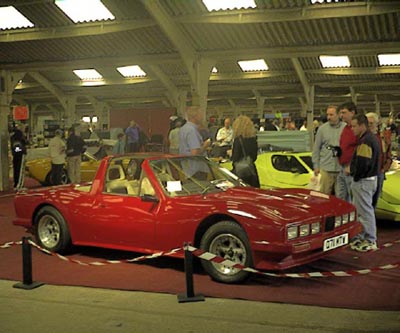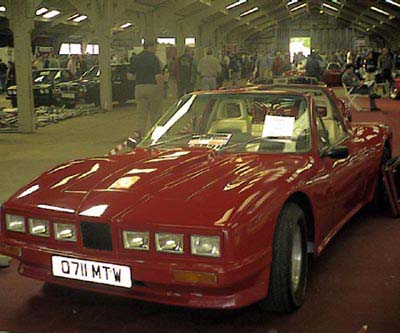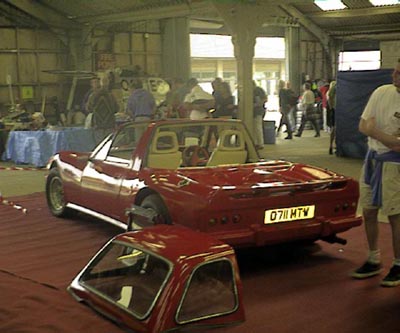Deltayn Proteus



Deltayn Proteus



This is a four-seater open sports car made by Deltayn in the mid-1980s prior to the Pegasus.
Following is an excerpt from a 1989 issue of Australian Jaguar, now called Jag Mag. Courtesy of David Brown, photos: Dave Puzey.
"Designed to the AC Cobra of the nineties, it is the brainchild of John Parradine whou sought to combine the power and aggressive styling of the Cobra with modern construction techniques and the refinements of proven engineering. Recognising that in order to achieve a quality product experience counts for all, and John chose renowned stylist Richard Oakes to create the required looks. From renderings a quarter scale model was built, an when happy with this a full scale clay was produced using plywood templates scaled from the model. When completed and moved into the light it still needed more work, and the buck was shortened and the rear end altered to achieve the aggressive yet beautifully proportioned car we see today. Mould were made from the clay, and the body is produced using combined glass fibre. Kevlar and structural foam to give a semi-monocoque structure.
For the mechanics a well-proven design was chosen as the starting point - the XJ12. The V12 engine is mated to a Getrag 5-speed gearbox with standard XJ axle units used front and rear. The only changes are to use Stable adjustable shocks, re-rated springs and a JaguarSport steering rack.
No car can perform well without an adequate chassis, and John has designed one that is ore than up to the task of handling the loads imposed by a high performance car. The chassis uses both round and square section tubes in basically a backbone format, with a separate frame mounting the door hinges, scuttle and twin screen tubes. At the rear the roll bor bolts to the axle kick-over and also carries the upper seat belt anchorage.
The interior of the car combines the necessity to use production car sourced components (Jaguar instruments, Ford Fiesta heater) with individualistic flair (leather braid door pulls, no glove box lid). The car has been trimmed by Callow&Maddox, well known for their work with Jaguar and Rover and many features many improvements, including a completely new fascia, over the original cream prototype.
The deep boot houses the twin fuller tank and spare wheel, along with recessed tool kit and jack. Clever four-bar link hinges allow the boot lid to open whilst clearing the body and easily operated hood.
However, the true test of any sports cars is its performance on the road. The demonstrator features a standard 5.3-litre V12 treated to gasl flowed heads, 6 Weber DCOE's and a custom made manifold and free flow exhaust system. This gives around 360 bhp, although the production car will use the standard fuel injected unit.
Seated in the car one is aware of the bulbous bonnet and thick windscreen pillar, though this doesn't create a problem on the road. The low roll bar gives a narrow rear field of view, the excellent door mounted mirrors more than compensating. All controls fall readily to hand, the instruments are clear if a little dated. The driving position is comfortable with the short throw gear lever readily to hand.
From standstill the performance is stunning. Low weight and high power help propel the car through 60 mph barrier in around 5 seconds. On suitable roads speeds in excess of 160 mph can be achieved, the car feeling perfectly stable with hood up or down. Handling is more than adequate, with good cornering ability, and no evidence of shakes or rattles on unfriendly surfaces. In fact, Pegasus scores highly in all areas".
The articles goes on saying that the order book is full, but only a handful were made before Mr Parradine went to France to chase his luck there.
Photos are courtesy of Marc Fresko and David Brown.
© and Copy, 2000-2005:
Paul Negyesi npaul@hu.inter.net